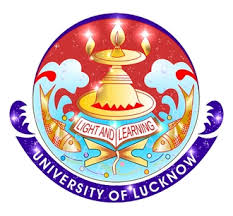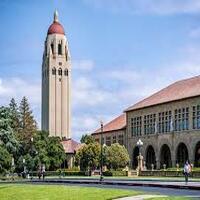University of Calicut
📚 1. Introduction: Catalyzing Regional Progress
University of Calicut Founded in 1968 under the Calicut University Act, the University of Calicut (UoC) stands as the largest university in Kerala—both in geographic scope and student reach (uoc.ac.in). Located in the Malabar region, it serves educationally underdeveloped communities. Its motto, “Nirmaya Karmana Sree” (prosperity through pure actions), underlines its commitment to social upliftment (uoc.ac.in). Accredited NAAC A+, UoC earned a respectable #89 NIRF national ranking in 2024, and features in the QS Asia Rankings (401–450 band) (shiksha.com).
🏛️ 2. Historical Roots & Institutional Growth
- Genesis & Governance: Spearheaded by Kerala political leaders like C.H. Mohammed Koya and E.M.S. Namboodiripad, UoC began by affiliating PG departments previously under Kerala University (en.wikipedia.org). Officially founded through state legislation in July–August 1968 (en.wikipedia.org).
- Mission & Structure: Embodied as a residential-cum-affiliating university, UoC caters to academic and community advancement. Its Golden Jubilee slogan, “University to Society,” reflects its vision (uoc.ac.in).
- Jurisdiction & Affiliation: UoC affiliates over 400 colleges across five districts—Kozhikode, Malappuram, Thrissur, Palakkad, and Wayanad (qa.edu.vn).
🌳 3. Campus Landscape & Facilities
- Main Campus at Tenhipalam: Spread across ~520–547 acres, centralizing administration, 31 academic departments, CHMK Library, Pareeksha Bhavan, science blocks, research centers, and more (uoc.ac.in).
- Two Off-Campus Nodes:
- The John Matthai Centre at Thrissur, specializing in economics.
- The Institute for Tribal Studies & Research in Wayanad, empowering indigenous communities (uoc.ac.in).
- Infrastructure Highlights:
- CHMK Library: Renamed in 1971, hosting ~95,000 books, 218 journals, and 10 newspaper subscriptions; Kerala’s first fully automated university library (en.wikipedia.org).
- Madhava Observatory: India’s largest university-level observatory with 14″-18″ telescopes, housed in a 6.6m dome; honoring 14th-century mathematician-astronomer Madhava of Sangamagrama (en.wikipedia.org).
- CSIF & Research Labs: Central Sophisticated Instrumentation Facility and modern labs support vibrant scientific research (uoc.ac.in).
- Botanical Garden & Museum: Supporting biodiversity awareness, with a university museum for cultural heritage .
- Sports Facilities: Asia’s largest natural stadium (1 km circumference, seating 100,000), indoor/outdoor courts, swimming pool; UoC nurtured icons like P.T. Usha and Anju Bobby George (gotouniversity.com).
- Student Amenities: Hostels (separate men/women), health center, auditorium, cafeterias, Wi-Fi-enabled academic blocks, and canteens (collegedekho.com).
🎓 4. Academic Structure & Programs
A. Diverse Academic Offerings
Through 34 departments organized into 9 schools—across arts, sciences, business, social sciences, languages, fine arts, and information studies—UoC is a multidisciplinary hub (qa.edu.vn). Popular courses include:
- UG: BA, BSc (flagship), BCom, BBA, BCA, BTech, BVoc, BEd, LLB
- PG: MA, MCom, MSc, MBA, MPhil, PhD programs
Admissions for professional degrees (BTech, MBA) based on national/regional exams (JEE‑Main, KEAM, CAT, MAT), while general PG programs rely on CUCAT (collegedunia.com, shiksha.com).
B. Quality, Accreditation & Ranking
- NAAC A+ rating, verifying high teaching and research standards (shiksha.com).
- Accredited by UGC and regularly featured in national (NIRF) and Asian (QS Asia) rankings, reflecting steady improvement—e.g., NIRF #89 overall, #89 university, and 101–150 band overall (shiksha.com).
C. Faculty & Pedagogy
A distinguished faculty of ~160 scholars fosters a blend of traditional lectures, seminars, and modern teaching techniques (collegeduniyabharat.com). Their efforts extend to research—particularly in science and social sciences—with ample guidance and mentorship .
D. Research Centers & Innovation
UoC hosts numerous in-house research centers: instrumentation, libraries, botany, environment, manuscript preservation, and, notably, the Madhava Observatory (en.wikipedia.org). Collaboration with bodies like IIA Bangalore drives academic contributions, especially in astronomy and science innovation (en.wikipedia.org).
🏛️ 5. Affiliated Colleges & Community Outreach
A. Scale & Diversity
With just over 400 colleges, UoC’s affiliates cover arts, sciences, technology, law, fine arts, management, physical education, pharmacy, and homeopathy—across government, aided, and self-financing colleges (qa.edu.vn). Many are in districts with limited resources, opening higher education’s doors wide (deccanchronicle.com).
B. Partner College Exemplars
- Farook College (Feroke): NAAC A++ autonomous PG college and University Grants Commission CPE-recognized (en.wikipedia.org).
- Malabar Christian College, Providence Women’s College, St. Joseph’s College (Devagiri): Long-standing affiliates with strong academic records and NAAC A/A+ accreditations (en.wikipedia.org).
C. Centralized Admission & Evaluation
A Centralized Admission Process (CAP) and CUCAT exams evaluate aspirants—ensuring fairness across undergraduate, postgraduate, and professional streams (collegedunia.com).
💼 6. Placement & Career Outcomes
- UoC’s 2024 placement efforts covered 282 PG students, with median salaries ranging from ₹2.76 LPA to ₹6 LPA (collegedunia.com).
- Recruiters include ICICI Bank, Federal Bank, Godrej, Asian Paints, Malabar Gold, Reliance, Bajaj Allianz, Kotak Mahindra, and more (collegedunia.com).
While opportunities arise more in PG programs, affiliated colleges also assist UG students in local placements, leveraging UoC’s partnerships.
🎭 7. Campus Culture & Student Life
A. Vibrant Campus Life
Cultural fests—arts, music, food events—join sports days and hosted tournaments (collegebatch.com). Student societies range across literature, science, entrepreneurship, and social service (collegeduniyabharat.com). Units like NSS and NCC foster civic responsibility and leadership (drravishinde.com).
B. Sports Legacy
Beyond its massive stadium, UoC supports athletics extensively. Alumni include national-level achievers like P.T. Usha, M.D. Valsamma, and Anju Bobby George (gotouniversity.com).
C. Central Library & Observatories
The CHMK Library is academically central, while the observatory adds a unique research-meets-learning dimension (en.wikipedia.org).
🚀 8. Strengths & Strategic Challenges
A. Core Strengths
- Inclusivity & Reach: Serving historically underserved communities.
- Rich Offerings: Spanning over 200 programs across UG, PG, and research levels .
- Quality Indicators: NAAC A+, automated library, observatory, strong sports infrastructure.
- Academic Reputation: Gradual rise in NIRF/QS Asia rankings.
B. Principal Challenges
- Rural Infrastructure: Needs improvement—ATM access, sanitation, clean water were concerns (collegedekho.com).
- Research Depth: Needs stronger national/international collaborations—beyond astronomy, sciences, and social sciences.
- Placement Enhancement: Particularly for UG programs, bridging the gap to high-earning careers.
C. Focused Initiatives
UoC is modernizing with smart classrooms, e-governance in exams, lab upgrades, and inviting frontier scholars (uoc.ac.in). Its School of Drama & Fine Arts, affiliated with the National School of Drama, adds performing arts depth (gotouniversity.com).
🌐 9. Looking Ahead: Vision & Aspirations
A. Academic Expansion
Plans include new interdisciplinary schools—management, data sciences, social innovation—elevating research and employability.
B. Community Integration
Greater collaborations with tribal centres, rural colleges, and industry partnerships will strengthen regional impact and job linkage.
C. Digital & Research Growth
Investing more in ICT, digital learning platforms, and R&D funding; future projects may include biotech labs and rural tech hubs.
D. Systemic Reforms
Tackling infrastructure issues, sanitation, and energy sustainability to nurture a better student environment and morale.
✅ 10. Who Should Consider the University of Calicut?
- Regional Aspirants: Students from Malabar and nearby districts seeking affordable, quality higher education.
- Science Enthusiasts: With strong labs, observatory, and instrumentation access.
- Cultural Athletes: Those with arts or athletic leanings will find rich club infrastructure well-suited to their development.
- Social Change Seekers: Individuals drawn to engagement and leadership in marginalized communities.
🎯 11. Summary Table
| Feature | Highlights |
|---|---|
| Established | 1968 (Calicut University Act) |
| Campus | 520–547 acres, 31 depts, off‑campus centres |
| Affiliates | ~406–410 colleges across 5 districts |
| Departments & Schools | 34 Depts in 9 academic schools |
| Library | CHMK; ~95k books, 218 journals |
| Observatory | Madhava Observatory (largest university-level in India) |
| Academics | UG, PG, PhD across arts to engineering |
| Placements | Median ₹2.8–6 LPA; 282 PG placements |
| Rankings | NIRF #89/401–450 QS Asia |
| Accreditations | NAAC A+, UGC |
| Sports Facilities | Asia’s largest natural stadium; champions produced |
| Challenges | Rural infrastructure, UG placements, research depth |
📝 12. Conclusion: A Catalyst of Regional Transformation
The University of Calicut stands as more than a campus—it is a regional powerhouse shaping Kerala’s intellectual, social, and athletic future. With unique assets like the observatory, massive sports infrastructure, and 400+ colleges under its wing, UoC offers access and opportunity where it matters most.
Its strengths—in inclusivity, academic breadth, and culture—are tempered by infrastructure and research challenges. Yet, through ongoing reforms, modernization, and community-focused initiatives, UoC is poised for deeper impact. For students seeking substance over shine, and community uplift alongside personal growth, University of Calicut offers a meaningful path.




